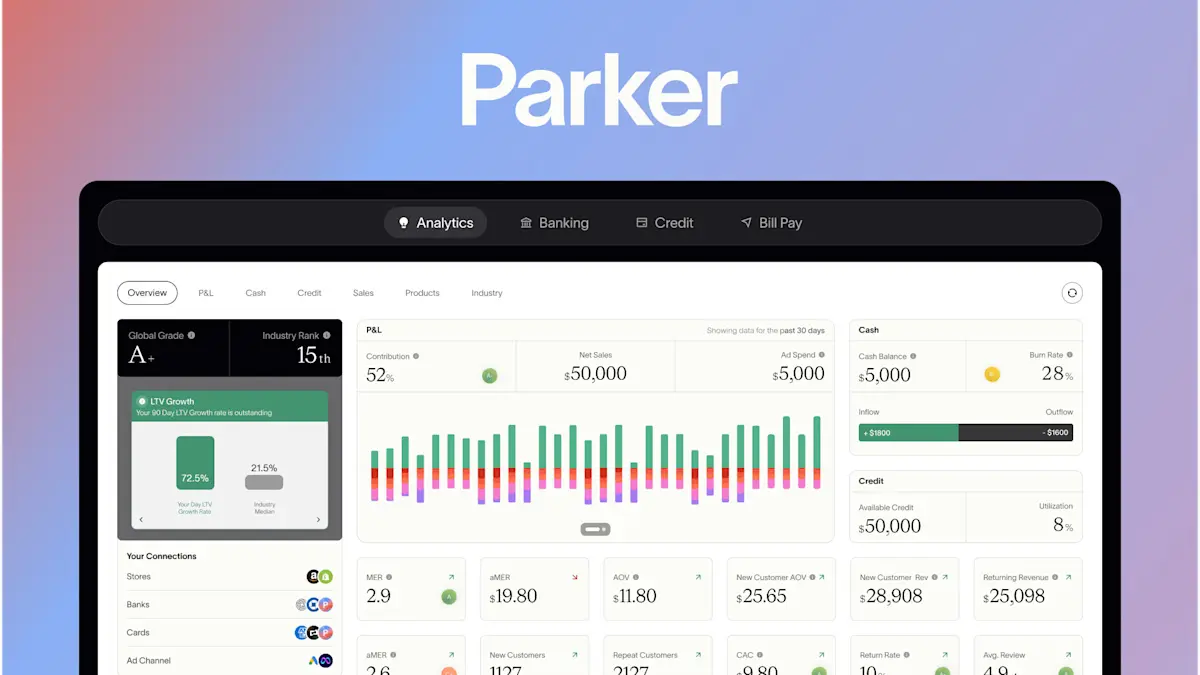The Finance Engine: The 5 Pillars for Running a Successful Business

It’s hard being a founder. Read the following and ask yourself if it resonates:
- You don’t always have peace of mind about having enough cash to pay for inventory or make payroll.
- You're uncertain if all the time and energy you've poured into the business will deliver the payout you want.
- You manage cash from one inventory purchase to the next, one payroll to another, staring at your bank account balance and wondering how to generate more.
What if I told you all of these anxieties aren’t actually necessary? That you can run your business and make smart, profitable decisions—without second-guessing?
You can, with a concept I call the finance engine.
When you understand it, everything becomes easier. The business becomes a fun, rewarding game, not a stressful, soul-sucking exercise. You can write yourself distribution checks, provide employee bonuses, make decisions about budget and growth, and get ahead on your finances—with confidence.
Every business has a finance engine, and the good ones know exactly what theirs is and how to optimize it. Contrary to what you might think, getting a handle on your finance engine is often easier than perfecting other parts of your business—like your sales funnel.
In this article, we break down the key components of the finance engine and explore why getting this right matters so much, not just for the business, but for you as a founder. We'll also look at how tools like Parker can give you a major advantage.
What exactly is a finance engine?
Think of your business as a car. You’re driving it on a long road trip across rugged terrain to a destination only you can imagine. You make adjustments constantly: a turn here to avoid a rock your car can’t clear, a sharp left onto a country backroad, a pause to admire the view as the sun sets—all in service of making it to your destination.
In this analogy, the car itself is your entire company. The wheels, frame, and windows are your product, your team, and your IP. And the finance engine is the beating heart at the center of it all, circulating fuel and making forward motion possible.
The five key components of this finance engine are:
- Cash - The fuel and financial lifeblood
- Profit - The engine's efficiency and mileage
- Reporting - The dashboard and gauges
- Planning - The map and navigation system
- Taxes - The fees and tolls along the way
Optimizing each of these components is crucial for any business owner who hopes to go the distance. Especially in the early days of your company's journey, every drop of fuel matters.
As Phil Knight, Founder of Nike said:
"Yes, the human body needs blood... but that day-to-day of the human body isn't our mission as human beings."
Cash flow is vital, but only because it catalyzes your greater mission. Finance oils the wheels; it's not the car itself. But no car can drive far without it.
1. Why cash is king
Cash is the lifeblood of a business. And managing cash flow is like doing cardio: stay disciplined, and you’ll always have the energy you need. Neglect it, and you’ll quickly find yourself gasping for air.
For early-stage ventures especially, every dollar matters. Tracking detailed cash flow metrics prevents you from pushing an empty tank uphill. To manage cash flow, stay on top of:
- The Cash Conversion Cycle - Track time from COGS outlay to sales collection
- Net Cash Balances - Understand current finance inflows/outflows
- Short-Term Cash Outlook - Create 13-week forecasts to navigate tighter times
- Aligned Financing Partners - Ensure access to capital if needed
Maintaining healthy cash reserves prevents painful financing events down the road that can put control of your company at risk.
2. The importance of profitability
The difference between cash and profit is time.
While cash flow keeps the motors running, profitability determines how far and fast your business can go. It measures how much gas you’re getting per mile - your engine’s efficiency in converting inputs to outcomes.
Key metrics to watch include:
- Profit by Product/SKU - Where are we making and losing money?
- Profit by Channel - Which platforms contribute most?
- Profit by Business Unit - How do departments compare?
Regularly reviewing your profit and loss statement is key. While cash flow fluctuates daily, the P&L provides a 30,000-foot snapshot of the business. Are you getting more or less “mileage” out of your engine month-over-month?
Remember, unprofitable activities, even those driving tremendous top-line growth, can still kill a business.
3. The reporting dashboard
To borrow a phrase from Peter Drucker, “what gets measured is what gets managed.”
In racing, split-second data analysis makes the difference between first and second place. Business is no different. Real-time financial reporting provides the visibility you need to stay ahead.
With accurate reporting tools, you can catch issues early and optimize operations through data-driven decisions. Key reports to have on your dashboard include:
- P&L, Balance Sheet, Cash Flow – The major financial statements
- Profit by Channel – Which areas to double down on
- Budget vs. Actual – How reality compares to the plan
- Sales Dashboard – Real-time order insights
- Marketing/Inventory KPIs – Departmental health checkpoints
Establishing reporting rhythms is as crucial as having the reports themselves - monthly reviews, weekly calls, daily huddles.
Consistency compounds clarity over time.
4. Planning for the road ahead
With cash as fuel, profitability as mileage, and reporting as the dashboard, planning is the GPS navigating toward your vision.
Setting the destination is easy: build a large, enduring company that funds your lifestyle while making a positive impact. The road to get there is full of branches, though. This is where strategic financial planning provides direction.
For example, you might prioritize rapid growth above all else. Taking on investors fuels this nicely. But eventually, investors want to realize returns. This could mean an early exit or restricted flexibility going forward.
Alternatively, slower organic growth preserves control and room to pivot. But it delays positive impact and cash flows. There are merits to both paths—it depends on the your true priorities.
The key is aligning immediate financial moves with the long-term dream state. Avoid decisions today that undermine or negate the ultimate vision later. Model out scenarios and ensure choices logically lead where you want to go.
Tools that help navigate include:
- Financial Modeling – Projecting “what-if” futures based on capital decisions
- Budgets – Creating detailed revenue and spending plans aligned to goals
- Demand Planning – Forecasting out inventory/expense needs
- Scenario Analysis – Preparing for uncertainty
Revisiting the roadmap periodically ensures alignment as the landscape evolves.
5. Taxes and compliance
You drive on roads the government built, so pay your taxes—but don’t overpay. As a business owner, getting comfortable with the tax man goes a long way.
View taxes and compliance duties as the tolls required to access the economic infrastructure enabling growth. Pay them promptly and accurately, so you can remain focused on the long road ahead. A knowledgeable CPA provides immense value here, from sales tax to income tax and everything in between. As the saying goes:
“You can pay your CPA, or you can pay the IRS. Choose wisely.”
Areas where CPAs add value include:
- Income Tax Minimization - Select advantageous business structures
- Incentive/Credit Use - Identify activities offering added deductions
- Property/Payroll Reductions - Reduce burdens on qualifying assets and roles
- Sales & Use Tax Filings - Comply with multi-state requirements
Accurately navigating taxation and compliance requirements may not be glamorous, but it keeps your motor running smoothly while avoiding nasty penalties or issues down the road.
The Bottom Line
We've covered a lot of ground exploring the finance engine - from managing cash and profitability to reporting, planning, and navigating taxes. But really, optimizing your finance engine is about more than just numbers on a spreadsheet.
It's about achieving your vision while avoiding that all-too-common horror story of chasing growth at all costs: only to end up unsatisfied, unbalanced and unfulfilled. It's about having confidence and peace of mind in your business rather than feeling helpless at its whim.
When you master your finance engine, you're able to experience the rewarding parts of entrepreneurship: paying yourself, sharing profits with your team, and having the time and money to enjoy life outside of work. You can make decisions out of opportunity and abundance rather than scarcity and fear. This isn't to say there won't still be unforeseen challenges. But by intimately understanding and continuously optimizing these core financial pillars, you put yourself in the driver's seat to overcome obstacles and reach your destination intact.
Related Articles
Ready to Join the Financial Revolution?





